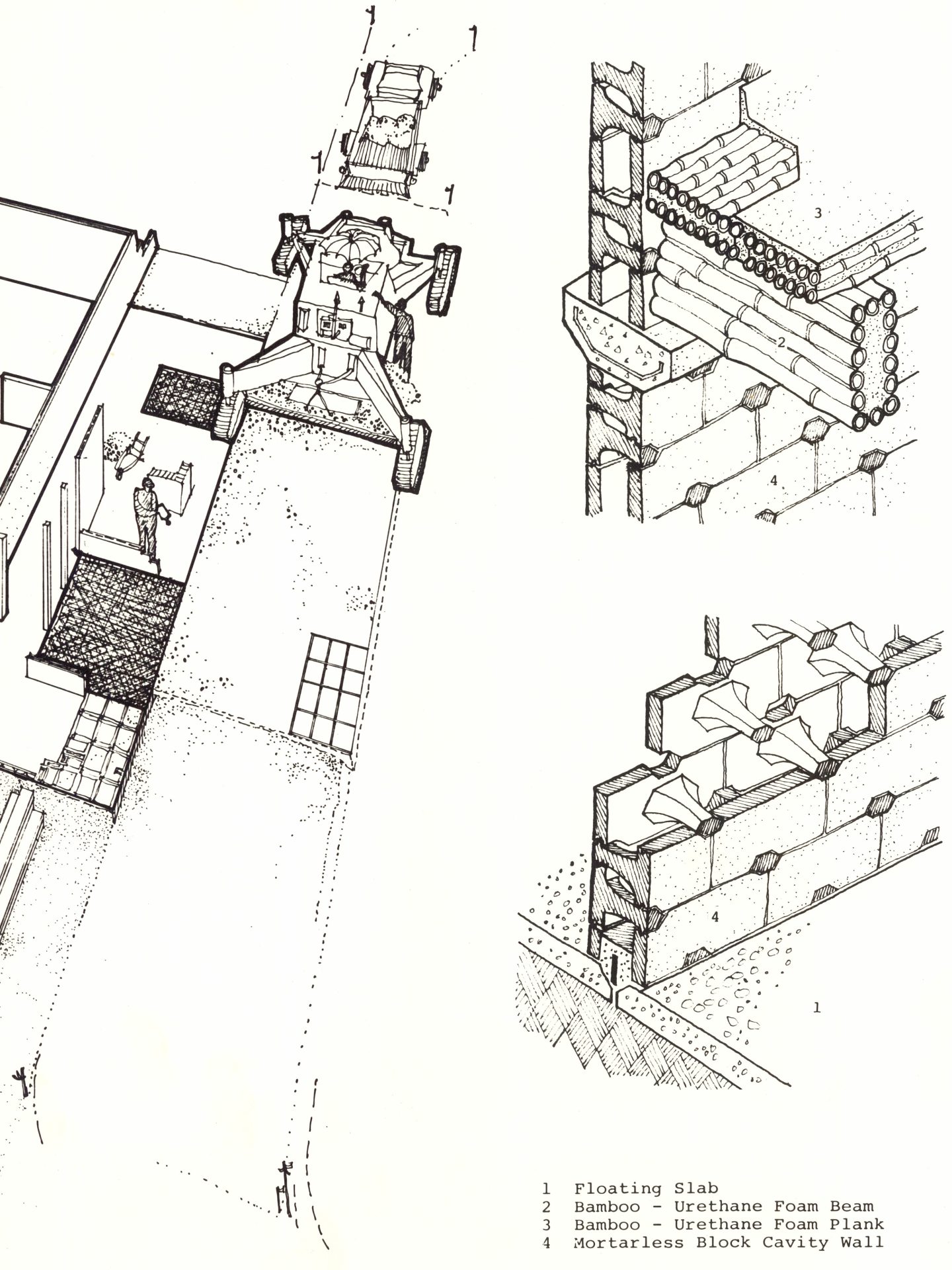
Peru Project – Low Cost Housing for the United Nations: Continuous floating slab
1969The floors are 10 cm unreinforced concrete slabs, laid down in 5.20 meters strips, similar to the house width, by a road building machine. Exposed edges are turned down, filled block (20 cm x 20 cm). Structural pin connections for ties into walls are cast by hand immediatelly after the slab is laid.
Contents
-
The Peru Project - Low Cost Housing for the United Nations: Interlocking concrete blocks for mortarless block wall - Drawings
01/01/1969
Axonometric drawing showing part of a mortarless wall constructed by interlocking blocks and its connection to the floating slab.
-
The Peru Project - Low Cost Housing for the United Nations: Cross sections of rooms depicting the entire construction system
01/01/1969
Two cross section drawings demonstrating the complete system of construction innovations to be implemented in each house, using mortarless load bearing cavity walls coated with molten sulphur for tensile reinforcement, and light weight beam and plank system made out of ...
References
-
Innovative Construction Systems, Techniques and Materials
One of the main topics of research, included in every building project, was to identify, early on in the design process, the material and techniques of construction. This would re-establish building as an art, and allow rapid shaping and adaptation, ...
-
Development of first Patterns and Pattern Languages
The first patterns were developed in 1967 by a group of people working together with Christopher Alexander in the Center for Environmental Structure. Between 1968 and 1976 the first pattern languages were developed and tested for particular projects undertaken by ...




 Go Back
Go Back